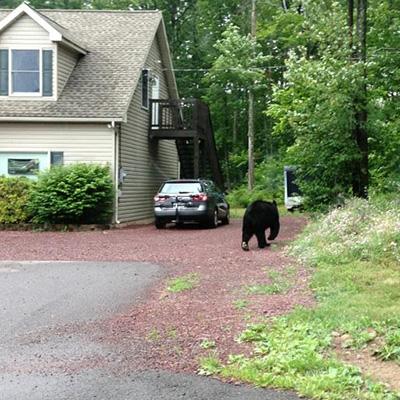The Influence of Land Stewardship and Human Activities on Mammalian Habitat Use in Exurban Areas

Exurban development (low-density house and road construction outside urban service boundaries) fragments private lands in the Northern Forest. Fragmentation disrupts the public/private mosaic of forested land that provides connectivity for the region’s iconic wildlife. NSRC researchers in the Adirondacks of New York found that human activities and behaviors may actually influence richness of mammal communities as much or more than changes in forest structure due to exurban development. Researchers sampled mammal communities using remotely-triggered infrared trail cameras in seven exurban subdivisions and nine reference sites with no development. They paired mammal surveys with traditional habitat sampling and visual observation of anthropogenic variables at home sites. A mail survey assessed landowner land ethics, attitudes, behaviors, and stewardship activities that could influence mammals.
Findings reveal little difference in overall numbers of mammals detected in exurban and reference sites, implying that many mammal species make use of exurban habitat. Although differences were small, exurban development did influence mammalian community structure, most strongly by attracting human-adapted species. However, humans and dogs were detected more frequently in reference sites, suggesting that although they are free of development, many reference sites had substantial levels of disturbance by human recreation. The same is likely true for other protected areas in the Northern Forest.
Richness of carnivores, such as black bear, and human-adapted species, such as white-tailed deer, both appear strongly related to landowner stewardship practices. Provision of potential food sources for mammals (flower/vegetable garden, fruiting shrubs/trees, bird feeder, grill, compost, pet food, garbage) far outweighed other stewardship and management variables in controlling number of mammals detected.
